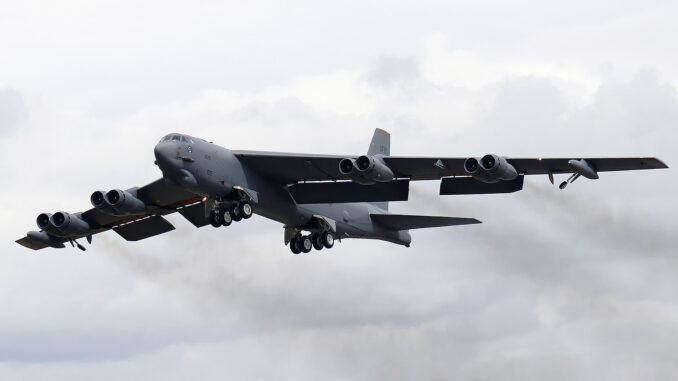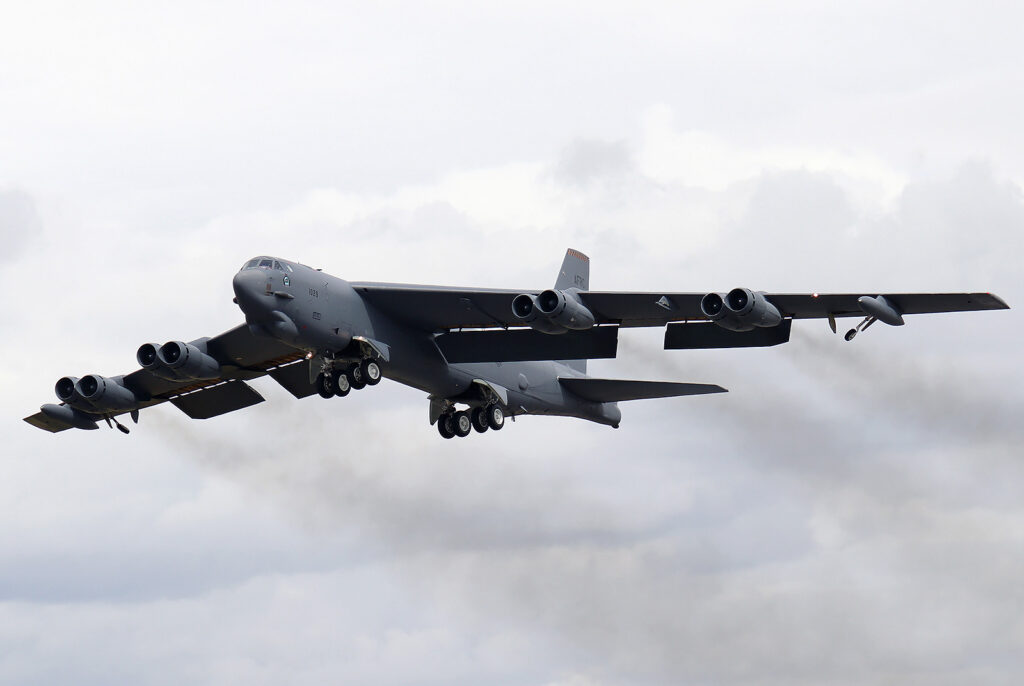
Discover the upgrades and new weapons that will transform the B-52 Stratofortress into the B-52J, a high-tech multi-role aircraft for the US Air Force.
In brief
The B-52 Stratofortress, a mainstay of the US Air Force since the 1960s, is undergoing major upgrades to become the B-52J. The upgrades include modern engines, advanced sensor systems and increased weapons capabilities, transforming this older aircraft into a sophisticated multi-role platform. The upgrades are designed to extend the life of the B-52, making it operational well into the 21st century, alongside the new B-21 Raider.
History and importance of the B-52 Stratofortress
The B-52 Stratofortress, often referred to as “The BUFF” (Big Ugly Fat Fellow), is a long-range strategic bomber used by the US Air Force since the 1960s. Originally designed during the Cold War for nuclear deterrence missions, the B-52 has proved its versatility and robustness over the decades. Despite its advanced age, it remains central to the US Air Force’s bombing capability, thanks to its ability to carry heavy loads over long distances. The last units built were delivered in 1962, making modernisation of this aircraft crucial to maintaining its relevance in modern conflicts.
Engine upgrades
One of the most significant upgrades from the B-52H to the B-52J is the replacement of its eight Pratt & Whitney TF33 engines, which date from the 1950s. These engines will be replaced by modern, more efficient engines, which will reduce fuel consumption, increase range and reduce maintenance costs. Engines such as the Rolls-Royce F130 are being considered for this upgrade. These new engines will offer improved thrust and greater reliability, while reducing emissions and noise.

Sensor and communication systems
The B-52J will be equipped with advanced sensor and communication systems, transforming the aircraft into a networked combat platform capable of sharing information in real time with other military units. These enhancements include modernised radars, electronic warfare systems and advanced surveillance capabilities. For example, the AN/APG-83 SABR (Scalable Agile Beam Radar) radar offers improved resolution, increased range and multi-target tracking capability, enabling the B-52J to detect and engage threats more effectively.
Weapons Capability
The B-52J will also see a significant improvement in its weapons capability. It will be able to carry and launch a wider range of munitions, including new-generation conventional and nuclear weapons. The internal weapons racks will be modified to accommodate long-range missiles, such as the Joint Air-to-Surface Standoff Missile (JASSM) and the Long Range Anti-Ship Missile (LRASM). In addition, the B-52J will be able to carry hypersonic weapons, enabling it to strike targets at high speed and long range, thereby increasing its operational flexibility.
Consequences of the improvements
The improvements to the B-52J will have a significant impact on the US Air Force and its global operations. Modernisation of the aircraft will extend its operational life into the mid-21st century, ensuring that the US Air Force has a reliable and versatile bomber platform. In addition, networked combat capabilities and new weapons will provide tactical superiority on the battlefield, enabling a rapid and effective response to emerging threats. However, these improvements will require substantial investment and close coordination with advanced technology providers.
Extrapolation and future prospects
The B-52J is a striking example of how military aircraft can be modernised to remain relevant in the face of rapid technological advances and changing strategic requirements. In the future, it is likely that other air platforms will follow a similar path of continuous modernisation to incorporate emerging technologies such as artificial intelligence, advanced electronic warfare and cyber threat defence systems. The transformation of the B-52H into the B-52J demonstrates that even decades-old technologies can be adapted to meet the demands of modern conflict, ensuring a resilient and adaptable air force.
The conversion of the B-52H to the B-52J marks an important milestone in the evolution of the US Air Force, demonstrating the importance of continuous modernisation to maintain technological and operational superiority. The planned upgrades will ensure that this iconic aircraft remains a pillar of US air power for decades to come.
War Wings Daily is an independant magazine.